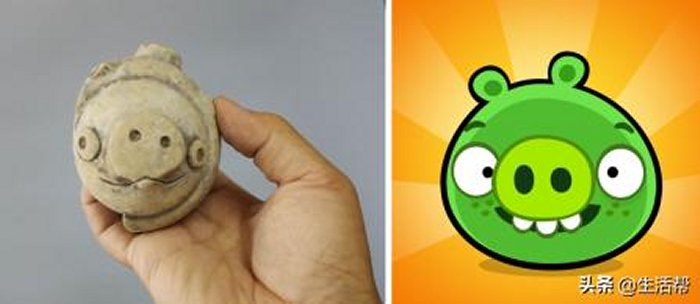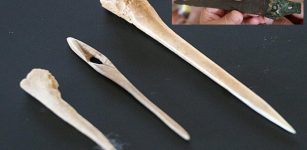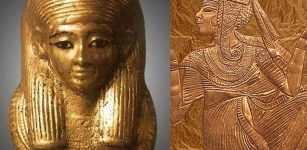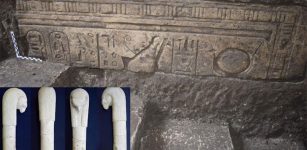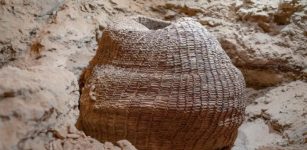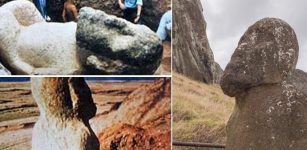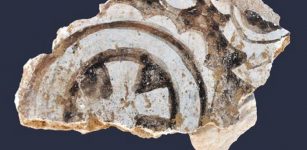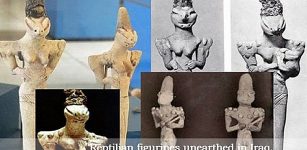Old Clay Pig Figurine And A 5,000-Year-Old Settlement Found Near Mysterious Sanxingdui Ruins, China
Conny Waters - AncientPages.com - Chinese archeologists have discovered a 5,000-year-old settlement located only about eight km south of the famous Sanxingdui Ruins, in the city of Guanghan, southwest China's Sichuan Province.
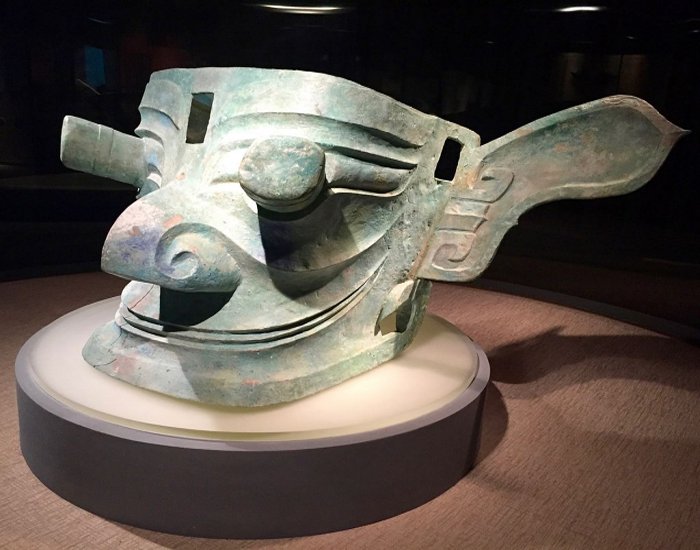 Bronze head (138 cm bred) with protruding eyes believed to be a depiction of Cancong, the semi-legendary first king of Shu. Image credit: Wikipedia
Bronze head (138 cm bred) with protruding eyes believed to be a depiction of Cancong, the semi-legendary first king of Shu. Image credit: Wikipedia
The artifacts, which were unearthed at the site include porcelain, stonewares, and a large number of potteries. One interesting artifact is 3,200-year-old pig figurine made of clay, which bears a clear resemblance to the famous pig from the Angry Birds mobile game.
The Chinese archaeologists believe that all these valuable artifacts unearthed at the site will help to better understand the ancient kingdom of Shu, which dates back 2,600 to 4,800 years. Only a few references regarding the Shu kingdom exist in the early historical records of China until the 4th century BC. The Shu kingdom was subjugated by the state of Qin in 316 BC.
The site reflects an uninterrupted regional development history of nearly 5,000 years, which is of great significance to the study of the origin, development, and evolution of the ancient Shu civilization," said Xin Zhonghua, an associate researcher with the Sichuan Provincial Cultural Relics and Archaeology Research Institute, Xinhua news agency wrote.
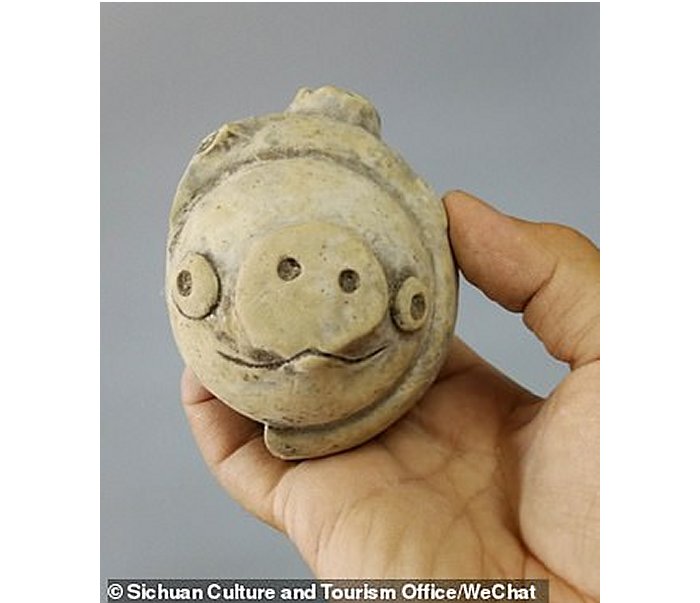 The 3,200-year-old clay pig excavated near Sanxingdui Ruins in southwest China's Sichuan Province.
The 3,200-year-old clay pig excavated near Sanxingdui Ruins in southwest China's Sichuan Province.
"This is the first time that a complete sequence of ancient Shu civilization has been found around Sanxingdui," he added.
The Sanxingdui Ruins are believed to be remnants of the Shu Kingdom ('Shu' was the ancient name
for Sichuan), which can be dated back 2,600 years to 4,800 years.
Since 1988, the ruins of the Sanxingdui have been protected.
Read more about the mysterious Sanxingdui ruin in our article:
Baffling Sanxingdui Civilization: Why Did These People Have Fascination For Eyes?
This most remarkable place was first discovered in 1929 when a local farmer accidentally stumbled upon about 400 jade pieces, and these were the first Sanxingdui relics, which were discovered at the site. Since this time, the next generations of archaeologists have excavated and studied the Sanxingdui culture.
In 1986, a team of Chinese archaeologists discovered two major sacrificial pits filled with nearly
1000 bronze objects including hundreds of masks and heads, sun-shaped wares, bronze figures, bells, and a great variety of artworks made in jade, gold, and stone. Many pieces of art display decorative dragons, snakes and birds, and other most curious relics that no one has ever seen.
However, no texts that could shed light on the secrets of the Sanxingdui culture were found.
Listed among China's top 10 archaeological findings in the 20th century, the Sanxingdui Ruins site is one of many examples showing the complexity of the Chinese civilization.
Written by Conny Waters - AncientPages.com Staff Writer

